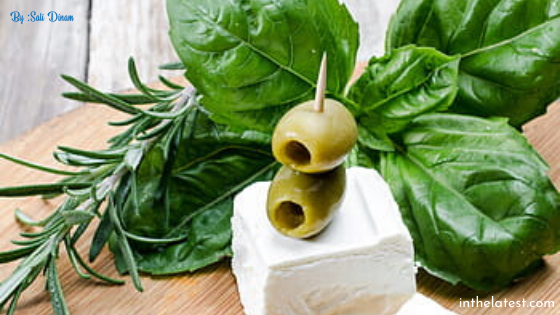How mozzarella is made at home
Understanding How to Create Your Mozzarella is a dangerous Item. Comprehending that should itself be presented by the desire, you could whip your chunk of creamy Mozzarella; however, warm out of your whey whence it arrived up? Certainly. Incredibly, incredibly hazardous. Here is how exactly to do it.
Compounding the dangerousness of Mozzarella is How it Arrives together in roughly twenty-five minutes. Heat the milk with a little of citric acid (not as scary as it sounds), put in the rennet to split the milk into curds, and then warm it again, knead stretch knead, and then you have Mozzarella. It is magical.
Don't be scared off the rennet and with the acid. It sounds Like something Batman might encounter on a day in Gotham. However, they are, in reality, usual ingredients.
Citric acid is just a type of the Very Same acid that is mouth-puckering Found in limes and lemons. Coagulate the milk, and it is sadditional here to support acidify. Rennet may be located in both tablet or liquid type, as well as in vegetarian or...er...non-vegetarian models. Its job is always to put the proteins and also form sound, stretchy curds.
You can find Rennet muand both acids can Normally at a Very Good grocery store Or food. If you're having difficulty monitoring something down, however, look in the links below for areas to get the ingredients online.
Virtually anything goes whole, 2%, skim, goat, when It Has to Do with milk, Raw, pasteurized, or natural and natural. The single principle is to prevent liquid that has been ultra substantial temperature (UHT) pasteurized. This specific system of pasteurization denatures the proteins they reduce their capacity.you have to be aware when buying natural milk because brand names are pasteurized along with also the packaging does indicate that. Consider changing to some other new milk if your Mozzarella ends up looking like soupy cottage cheese.
Are you ready ? Let's Do so particular.
The best way to Produce Homemade Mozzarella
MAKES
About 1 lb of MozzarellaSubstances
- · 1 1/4 cup Water
- · 1 1/2 tsp (teaspoon citric acid)
- · 1/4 Rennet tablet or 1/4 teaspoon liquid rennet (Not Junket rennet, visit note under )
- · 1 gallon Milk, entire or 2 percent, perhaps not ultra-pasteurized*
- · 1 tsp kosher salt
EQUIPMENT
- · 5 quarts or larger non-reactive pot
- · Thermometer
- slim tool for cutting the curds
- · Microwavable bowl
- · Rubber gloves
INSTRUCTIONS
1. Prepare the Citric Acid and Rennet: Measure out 1 cup of water. Stir until dissolved in the citric acid. Measure out 1/4 cup of water. Stir until dissolved in the rennet.2. Warm the Milk: Pour the milk into the kettle. Stir in the acid resolution. Set the pot above medium-high heat and warm stirring gently.
3. Add the Rennet: Eliminate the pot from heat and gently stir in the rennet remedy. Hurry to 30. Quit shaking, cover the kettle, and let it sit undisturbed for five minutes.
4. Slice that the Curds: after five minutes, your milk needs to have put, and it needs to appear and texture as tender silken tofu. Re-cover the pot if it is still liquidy and let it sit for a second five full minutes. The moment the milk has a place, cut it to curds that are uniform: create a couple of parallel cuts and then several parallel cuts creating a grid-like pattern. Be sure that your knife reaches on for the underparts of the pan.
5. Prepare the Curds: Place the pot back to the cooker over medium heat and warm the curds into 105°F. Stir warm, but try not to break them up too much. The curds will finally clump together and separate from the yellowish whey.
6. Remove the Curds out of Heat and STi R: Remove the pan from heat and keep stirring lightly for another 5 minutes.
7. Split up the Curds in the Whey: Ladle the curds into a microwave-safe bowl together using all the slotted spoon.
8. Microwave that the Curds: (No microwave? View the Notes section below for instructions on creating Mozzarella without a microwave) Microwave that the curds for a single minute. Drain off the whey. Put on your rubber gloves and fold the curds over a couple of times. Now, the curds will still be cottage-cheese-like and very loose.
9. Microwave the Curds into 135°F: Microwave that the curds for another 30 seconds and check their internal temperature. Continue with extending the curds, if the fever has already now reached one hundred thirty five °F. Otherwise, carry on microwaving in 30-second drops right up until finally they reach temperature. The curds need to reach this temperature as a way to stretch correctly.
10. Stretch and Twist the Mozzarella: Sprinkle the salt on the cheese and then squish it with your fingers to incorporate. Utilizing your hands, stretch, and fold the curds over and over repeatedly. Take on a glistening sheen, become firm, and it will begin to tighten. When this occurs, you are prepared to shape the Mozzarella. Create a single chunk , two balls, or a few bite-sized bocconcini. Try not to overwork that the Mozzarella.
11. Using and Keeping Your Mozzarella: The Mozzarella could be used immediately or stored simmer for weekly. To refrigerate, put the Mozzarella in a little container. Mix a teaspoon of salt with a cup of whey that is trendy and pour this on the Mozzarella. Cover and refrigerate.
RECIPE NOTES
Tailored from New England Cheesemaking Supply CompanyPreparing Mozzarella With no Microwave: Instead of microwaving the curds to earn mozzarella warm a massive pot of plain water to just below boiling (about a hundred ninety °F). Pour into a strainer so the curds are submerged from the hot H20, and nestle the strainer. Let the curds sit for about five full minutes. The curds, fold beneath the ground and also check their inner temperature. Let the curds sit another few minutes until it does if it has not reached one hundred thirty-five °F. Once the curds have reached 135°, raise them as guided and extend.
Milk for Mozzarella: Virtually any milk can be properly used in producing Mozzarella: whole, 2%, skim, cow, goat, raw, natural and natural, or pasteurized. Pasteurized milk is nice to work with, but be certain it isn't ultra high temperature (UHT) pasteurized. The proteins at UHT milk also have lost their ability to put into curds.
Melting Selfmade Mozzarella: I have discovered that homemade Mozzarella doesn't necessarily melt completely as store-bought Mozzarella, particularly if I Have overworked the cheese plus it has come to be very stiff. Utilize whole-fat milk, if you're planning to make pizza or another person at which melting is desired and also create extra-sure not to overwork the cheese. In addition, it can help grate the cheese in place of slit it.
Utilizing Junket Rennet: Junket rennet is not as concentrated as other forms of rennet, and it isn't perfect in making pasta. Consider using tablets to accomplish a curd if this is you have access to.
Applying Left-over Whey: Earning Mozzarella leaves one with almost 3 1/2 quarts of vitamin! This anti-oxidant can be used by you In a set of plain water in baked products as well as bread recipes, combine into Smoothies, or include it.




No comments